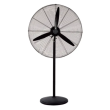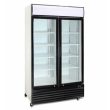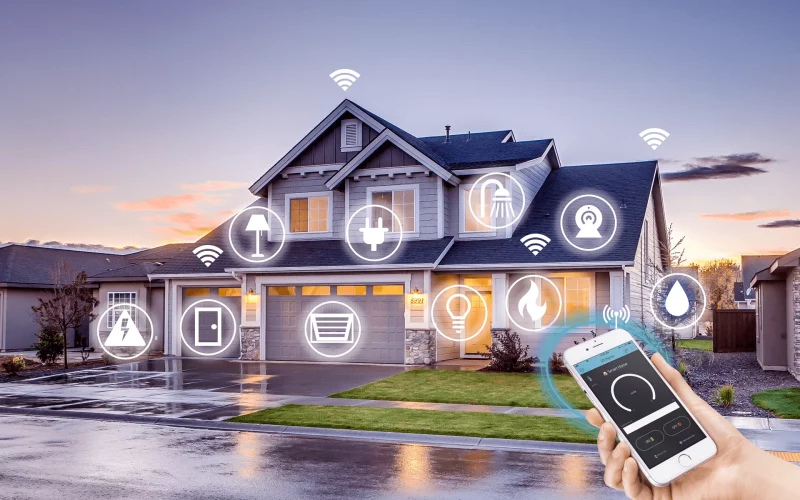Smart Home Automation: Revolutionizing Modern Living
In today’s fast-paced, technology-driven world, smart home automation has emerged as a game-changing innovation that is transforming the way people interact with their homes. From lighting and security to climate control and entertainment, smart home automation allows homeowners to seamlessly integrate and control various devices through a single platform, typically via a smartphone, tablet, or voice assistant. With rapid advancements in artificial intelligence (AI) and the Internet of Things (IoT), smart home automation is evolving to offer greater convenience, energy efficiency, and enhanced security.
What Is Smart Home Automation?
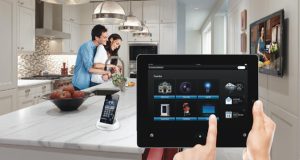
Smart home automation refers to the use of technology to control various home systems remotely or automatically. These systems can include lighting, heating and cooling (HVAC), home security, appliances, and even entertainment systems. The central aspect of a smart home is the connectivity of these devices, enabling them to communicate with each other and with the user through a central hub or mobile application. Modern smart homes use protocols like Wi-Fi, Zigbee, Z-Wave, and Bluetooth to facilitate this communication, ensuring that everything works in harmony.
Key Benefits of Smart Home Automation
Convenience and Control:
One of the most significant advantages of smart home automation is the ability to control devices from anywhere, at any time. Whether you’re managing lighting from your office or adjusting the thermostat while on vacation, smart home systems offer unparalleled convenience. Voice assistants like Amazon Alexa, Google Assistant, or Apple’s Siri enable hands-free control, further enhancing ease of use.
Energy Efficiency:
Smart homes can significantly reduce energy consumption, lowering utility bills and benefiting the environment. Devices such as smart thermostats (e.g., Nest or Ecobee) learn user preferences and adjust heating and cooling systems accordingly, ensuring minimal energy waste. Smart lighting systems (e.g., Philips Hue) can automatically turn off when not in use or dim based on natural light levels, optimizing energy usage.
Enhanced Security:
Home security is a top priority for many homeowners, and smart home automation delivers robust solutions. Smart security systems can include cameras, doorbells with video capabilities (like Ring or Arlo), motion detectors, and smart locks. These devices can be monitored in real-time via a smartphone, and many systems send alerts if unusual activity is detected. Some systems even offer facial recognition or geofencing to arm or disarm security features based on the user’s proximity to the home.
Comfort and Customization:
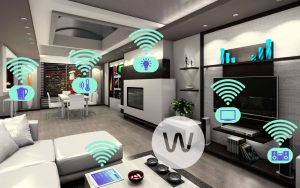
Homeowners can personalize their environments according to their preferences. For example, smart lighting can be adjusted to create different moods, while automated curtains or blinds can help regulate natural light. Smart speakers and home entertainment systems (like Sonos or Bose) can integrate with virtual assistants, allowing users to create customized music or movie-watching experiences with simple voice commands.
Safety and Maintenance:
Smart appliances can alert homeowners to potential maintenance issues or hazards. For example, smart refrigerators can notify users when they are running low on groceries, while smart water leak detectors can prevent costly water damage by alerting the homeowner at the first sign of a leak.
Examples of Smart Home Devices
Smart Thermostats:
Nest and Ecobee are leading examples of smart thermostats that adjust temperature settings based on user behavior and preferences. They can reduce energy costs by automatically switching to energy-saving modes when no one is home.
Smart Lighting:
Systems like Philips Hue and LIFX offer users control over lighting with the ability to set schedules, change colors, and adjust brightness from a smartphone or through voice control.
Smart Security Systems:
Ring and Arlo are two popular brands that offer video doorbells and smart cameras, allowing homeowners to monitor their property remotely and receive alerts when motion is detected.
Smart Speakers:
Devices like Amazon Echo and Google Home allow for voice-controlled automation. They also integrate with other smart home devices, enabling users to control various systems using simple voice commands.
Smart Appliances:
Samsung and LG offer smart refrigerators, washing machines, and ovens that can be controlled remotely. These appliances provide added convenience, such as sending notifications when a load of laundry is finished or when an oven has reached the desired temperature.
Real-World Case Studies of Smart Home Automation
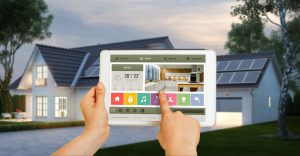
The Rise of Smart Apartments:
Real estate developers are increasingly incorporating smart home technology into apartment complexes to attract tech-savvy tenants. In cities like San Francisco and New York, luxury apartments are being equipped with smart lighting, climate control, and security systems to appeal to renters who prioritize convenience. For instance, AvalonBay Communities has integrated smart home technology across several properties, offering tenants the ability to control their living environment via a mobile app.
Smart Home Automation in Elderly Care:
Smart home technology is playing an important role in providing care for elderly individuals. Devices such as smart speakers, voice assistants, and health monitoring systems can help seniors live independently for longer periods. A notable example is CarePredict, a smart home platform designed to monitor the daily activities of elderly individuals. The system uses AI to detect any deviations from normal patterns and can notify caregivers if the individual requires attention, ensuring their safety and well-being.
Energy-Efficient Homes in the UK:
In the UK, smart home automation is becoming a cornerstone in the push for sustainable living. Developments such as the Hanham Hall in Bristol have incorporated smart energy solutions, including solar panels, smart meters, and smart lighting systems. These features have significantly reduced energy consumption, helping residents save on utility costs while reducing their carbon footprint.
Challenges and Considerations
While the benefits of smart home automation are clear, there are several challenges to consider:
Privacy and Data Security:
Since smart home devices collect and transmit data, privacy and security concerns are paramount. Hackers can potentially access devices or systems if they are not properly secured. It is crucial for homeowners to use strong passwords, update firmware regularly, and invest in security-focused systems.
Interoperability:
With numerous manufacturers and systems on the market, ensuring that devices from different brands work together seamlessly can be a challenge. Standards like Matter are emerging to address this issue by providing a universal protocol for smart home devices.
Cost:
While prices for smart home devices have dropped in recent years, the initial investment can still be significant, particularly for larger systems. However, many homeowners find that the long-term savings in energy costs and added convenience justify the expense.
The Future of Smart Home Automation
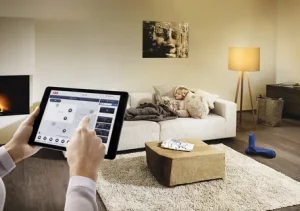
The future of smart home automation is poised for further innovation, with AI and machine learning playing an increasingly prominent role. AI will allow for more predictive automation, where systems learn from user behavior to anticipate needs before the user even gives a command. For instance, smart homes will be able to adjust lighting, temperature, and entertainment systems based on the time of day and individual preferences.
Moreover, the integration of 5G technology promises faster and more reliable connectivity between devices, making smart home systems even more responsive. As these technologies advance, we can expect even greater levels of convenience, energy efficiency, and personalization.
Conclusion
Smart home automation is no longer a futuristic concept but a reality that is transforming modern living. Its benefits—from energy efficiency and convenience to enhanced security and personalized comfort—are making it an increasingly popular choice for homeowners worldwide. As technology continues to evolve, the possibilities for smart homes will only grow, offering more intelligent, interconnected systems that cater to the needs of everyday life.
Whether you’re a homeowner looking to reduce energy consumption or simply someone interested in the convenience of controlling your home with a voice command, the future of smart home automation holds endless potential.



